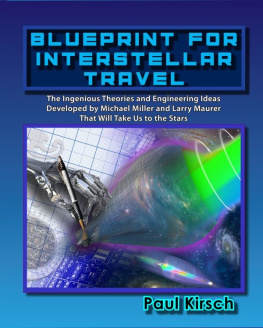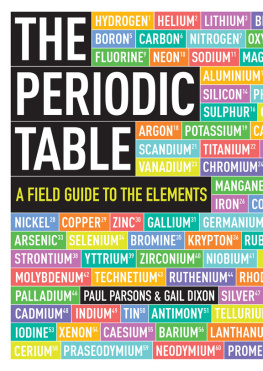Paul Parsons - Space Travel
Here you can read online Paul Parsons - Space Travel full text of the book (entire story) in english for free. Download pdf and epub, get meaning, cover and reviews about this ebook. year: 2020, publisher: Johns Hopkins University Press, genre: Children. Description of the work, (preface) as well as reviews are available. Best literature library LitArk.com created for fans of good reading and offers a wide selection of genres:
Romance novel
Science fiction
Adventure
Detective
Science
History
Home and family
Prose
Art
Politics
Computer
Non-fiction
Religion
Business
Children
Humor
Choose a favorite category and find really read worthwhile books. Enjoy immersion in the world of imagination, feel the emotions of the characters or learn something new for yourself, make an fascinating discovery.

- Book:Space Travel
- Author:
- Publisher:Johns Hopkins University Press
- Genre:
- Year:2020
- Rating:5 / 5
- Favourites:Add to favourites
- Your mark:
- 100
- 1
- 2
- 3
- 4
- 5
Space Travel: summary, description and annotation
We offer to read an annotation, description, summary or preface (depends on what the author of the book "Space Travel" wrote himself). If you haven't found the necessary information about the book — write in the comments, we will try to find it.
Space Travel — read online for free the complete book (whole text) full work
Below is the text of the book, divided by pages. System saving the place of the last page read, allows you to conveniently read the book "Space Travel" online for free, without having to search again every time where you left off. Put a bookmark, and you can go to the page where you finished reading at any time.
Font size:
Interval:
Bookmark:
Space Travel
Ten Short Lessons
Also in thePOCKET EINSTEINseries
Artifical Intelligence and Robotics: Ten Short Lessons
Ten Short Lessons
Paul Parsons

First published in Great Britain in 2020
by Michael OMara Books Limited
9 Lion Yard
Tremadoc Road
London SW4 7NQ
Copyright Michael OMara Books 2020
All rights reserved.
Printed in the United States of America on acid-free paper
2 4 6 8 9 7 5 3 1
Johns Hopkins University Press
2715 North Charles Street
Baltimore, MD 21218-4363
www.press.jhu.edu
Library of Congress Control Number: 2020934717
ISBN 978-1-4214-3974-7 (paperback : acid-free paper)
ISBN 978-1-4214-3975-4 (ebook)
Designed and typeset by Ed Pickford
Illustrations by David Woodroffe
Special discounts are available for bulk purchases of this book. For more information, please contact Special Sales at specialsales@press.jhu.edu.
Johns Hopkins University Press uses environmentally friendly book materials, including recycled text paper that is composed of at least 30 percent post-consumer waste, whenever possible.
Among my earliest childhood memories are some vivid images of a magical world. Not Narnia or Hundred Acre Wood, but a red-brown planet called Mars. It was 1976, the year Concorde took to the skies, twenty-nine nations boycotted the Olympic Games in protest at South African apartheid, and VHS video cassettes first went on sale. It was also the year that, on 20 July just over a month before my fifth birthday NASAs Viking 1 lander touched down on Mars and returned the first ever pictures from its surface. I remember watching the news reports showing the spacecrafts landing foot planted firmly in the rock-strewn Martian soil. And then the amazing vistas of a rusty-red world with a pale-salmon sky. I was enthralled.
The Viking imagery made space feel real. More tangible. There were already pictures taken by astronauts in orbit, or on the moon, or images of the distant planets like Jupiter captured by astronomers through their telescopes. And these were incredible. But they were also alien, and abstract so much so that it was difficult to relate what you were seeing to the real world. The images returned from Viking 1, and its sister craft Viking 2, which landed on Mars two months later, showed us a world that could, at a glance, be mistaken for Earth. You could imagine standing there; you could almost reach out and touch it.
Today, were standing at a pivotal juncture in the human exploration of space. For the first time in almost fifty years, human astronauts are poised to return to the moon and, its hoped, will continue on to Mars and even further afield. Humans last set foot on the moon in 1972, and havent been beyond low Earth orbit since. The new flurry of activity were about to see stems from renewed interest in the exploration and scientific study of the moon by American space agency NASA which even has plans to put a space station in lunar orbit as well as the rapid expansion of the private space launch and space tourism industries.
And yet its not just about flags and footprints. The next decade will see a wave of new robotic spacecraft take flight to explore the planets and moons of our solar system. New lander missions to Mars will attempt to sniff out the chemical and geological signatures of past life on the planet, and will deploy a helicopter scout to survey the Red Planet from the air. The formidable James Webb Space Telescope the successor to the Hubble Space Telescope will begin its primary mission, studying the birth of planets, stars, and the first generation of galaxies (groups of many stars, like our own Milky Way) that condensed billions of years ago from the hot soup of the early universe. And there will be new missions heading to the outer realms of the solar system, studying the gas-giant worlds Jupiter and Saturn and their moons, some of which may have oceans of liquid water lurking beneath their frozen surfaces. The findings of these missions may, like Viking before them, inspire the next generation of astronomers and space scientists.
This book is a brief tour around the science of space travel, from its beginnings in the nineteenth century with the musings of Russian rocket pioneer Konstantin Tsiolkovsky, through the EastWest Space Race and the pomp and glory of the moon landings, to the Space Shuttle and the International Space Station, and the amazing future concepts that could see human explorers travelling to other star systems or colonizing other planets.
Exploring space is part and parcel of understanding the universe and our place in it, and it may well prove vital to the ultimate survival of our species. So climb aboard the capsule, strap yourself in, and get comfortable. Were about to make the next giant leap.
Paul Parsons
To be the first to enter the cosmos, to engage, single-handed, in an unprecedented duel with nature could one dream of anything more?
YURI GAGARIN (1961)
The feeling of anxiety in the pit of your stomach has grown close to nausea, and your mouth is parched. But who can blame you? Youre strapped into a capsule atop a space rocket taller than an office block. And now its ready to launch, laden with enough fuel to detonate with the force of a small nuclear weapon.
Youve been in your seat for nearly three hours, waiting patiently as mission controllers run test after test on the spacecrafts systems. All the while, youve rehearsed the task ahead of you. Running through different contingencies in your mind. Praying a little. Now the countdown is into its final moments.
Before you can ruminate further, theres a jolt followed by a heavy rumble. The cabin lurches from one side to the other and then begins to shake violently as the main engines ignite. As they throttle up to maximum power, the G-force presses down like a great weight on top of you, forcing you back into your seat as millions of pounds of thrust hurl you and the rocket up towards the sky.
A little over a minute into the flight and youre already travelling faster than the speed of sound. As you continue to accelerate, the howl of the wind outside becomes eerily audible as it rushes over the capsules thin outer skin. A short time later, theres a loud bang and you feel a hard kick in the back as the rockets first stage is jettisoned and the second-stage engines light up. Youre now 60 km (37 miles) up, moving at nearly 10,000 km per hour (6,214 mph), and still accelerating. Gradually, the sky fades to black and, as the atmosphere grows thinner, the wind and the pounding vibrations die away.
Youve now reached orbit, flying 300 km (186 miles) above the surface of the Earth at a speed of approximately 28,000 km/h (17,400 mph) thats 7.8 km (4.8 miles) every single second, more than twenty times the speed of sound.
Abruptly, the engine shuts off and you get your first taste of zero gravity, floating out of your seat until the straps of your harness snap taught to keep you in place. Your stomach isnt so fortunate. It feels like its in your throat, as if youre permanently driving over the crest of a humpback bridge. Glancing out of the window, you see the Earth wheeling below a cloud-swathed pearly-blue sphere set against the inky darkness beyond. Congratulations: you have just become the latest human explorer to venture into the beguiling realm of outer space.
Fiction is a handy device for conveying the incredible, but its also how humanitys long trek into space actually began.
Next pageFont size:
Interval:
Bookmark:
Similar books «Space Travel»
Look at similar books to Space Travel. We have selected literature similar in name and meaning in the hope of providing readers with more options to find new, interesting, not yet read works.
Discussion, reviews of the book Space Travel and just readers' own opinions. Leave your comments, write what you think about the work, its meaning or the main characters. Specify what exactly you liked and what you didn't like, and why you think so.







